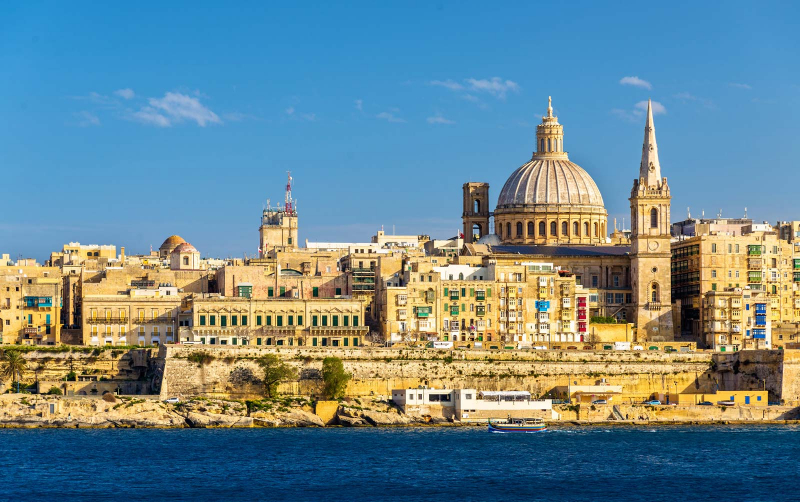Valletta
Valletta is Malta's administrative center and capital. Valletta, Europe's southernmost capital, is located on the main island, between Port Marsamxett in the west and Grand Harbor in the east. With only 0.61 square kilometers, Valletta has also become the European Union's smallest capital.
Knights Hospitaller constructed Valletta's 16th-century structures. During the Siege of Malta, the city is called after Jean Parisot de Valette, who was successful in defending the island against the Ottoman invasion. Despite World War II, which left major wounds on the city, including the demolition of the Royal Opera House, the city was founded on Baroque architecture with aspects of Mannerist, Neoclassical, and Modern architecture. In 1980, UNESCO designated the city as a UNESCO World Heritage Site. With 320 monuments, it is now one of the world's most densely populated regions. Valletta, often known as the "open-air museum," was crowned European Cultural Capital in 2018. Valletta is also Europe's sunniest city. Along with the splendor of Baroque houses, gardens, and churches, the city is known for its defenses, which include forts, curtains, and cavalry squads.
Valletta's street and square architecture range from the mid-16th century Baroque period through modernism. The city is the island's primary cultural hub and is home to a unique array of churches, palaces, and museums, as well as being one of the city's most popular tourist destinations. When British Prime Minister Benjamin Disraeli visited the city in 1830, he characterized it as a city of palaces erected by gentlemen, adding that Valletta has aristocratic architecture, and if it did not stand out, any European metropolis would be on par with Venice and Cádiz.











